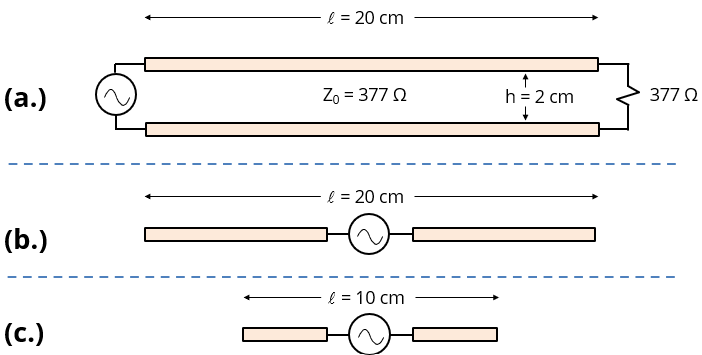EMC Question of the Week: January 13, 2025

Driven with the same ideal voltage source, between 10 MHz and 10 GHz, which of these antennas produces the highest radiated emissions at its resonant frequency?
- 20-cm matched 377-Ω parallel wires (2-cm separation)
- 20-cm center-driven dipole
- 10-cm center-driven dipole
- both (b.) and (c.)
Answer
The best answer is “d.” At resonance, center-driven dipoles radiate very effectively. For thin wires, the radiation resistance is generally between 72 and 80 ohms with the exact value depending on the wire radius relative to the length. The radiated power is approximately given by the rms voltage squared divided by the radiation resistance.
The parallel arms of the transmission line configuration in (a.) contribute relatively little to the radiated emissions. The main contributors to the emissions in this configuration are the 2-cm vertical connections at each end. Because the line is matched, there is no resonant frequency. The maximum emissions occur in directions where the contributions from the two vertical sections add in phase. However, the limited amount of current and the short length of the vertical wires prevent this configuration from radiating significantly.
Note that the characteristic impedance of the transmission line being 377 Ω has nothing to do with the amount it radiates. There is no direct relationship between the characteristic impedance of transmission lines and the amount they radiate.
Have a comment or question regarding this solution? We'd like to hear from you. Email us at
